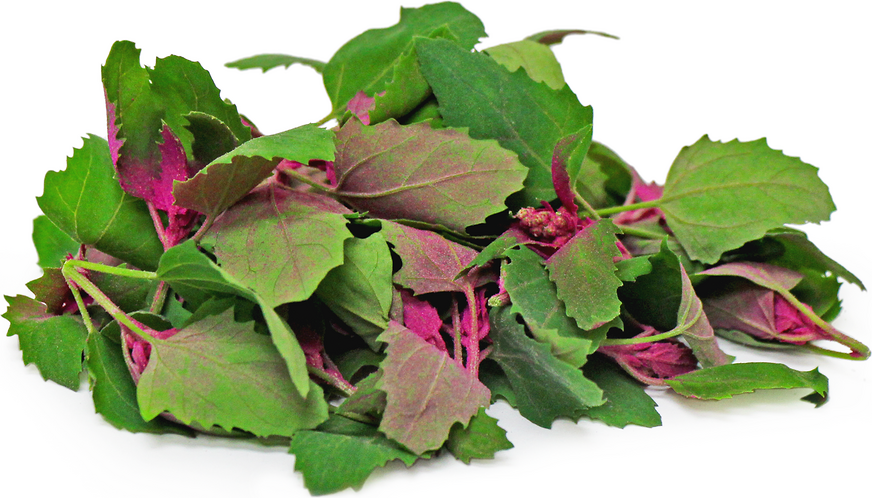


Magenta Spreen
Estimated Inventory, oz : 0
Description/Taste
Magenta Spreen can grow to heights of almost three meters, giving credence to its lofty synonym, tree spinach. Its distinctive triangular-shaped leaves have a slightly toothed margin and are covered in a reflective downy layer. The soft, velvety green foliage is highlighted by tinges of magenta, especially on those nearest the stems’ tip. The larger leaves have a slightly chewy and fibrous texture, while smaller leaves are delicate and tender. Magenta Spreen has mild earthy tones with a fresh grassy quality that is reminiscent of baby spinach.
Seasons/Availability
Magenta Spreen can be found year-round with peak season in the late winter through summer.
Current Facts
Magenta Spreen may also be referred to as Tree spinach, Purple goosefoot and Giant lambs quarters, and as is botanically classified as Chenopodium giganteum. It is a relative of lambs quarter, spinach, quinoa, beets and chard, and a member of the Chenopodioideae, or Goosefoot, subfamily. While many of the plants in this family are domesticated and cultivated, they also occur abundantly in the wild and are a favorite among foragers. Magenta Spreen and its cousins are distinguished by their characteristic shaped leaves which have been likened to the footprint of a goose, thus the subfamily’s common name.
Nutritional Value
Maganta Spreen is rich in vitamins A, C and E, calcium and iron.
Applications
Magenta Spreen is a delicate leafy green that may be used raw or cooked and is often substituted for baby spinach. Larger leaves stand up to sautéing, steaming and braising, however young tender leaves should be enjoyed raw. Combine the mildly earthy tasting leaves with robust peppery arugula in a salad. Gently wilt the leaves in a neutral oil and finish with sesame seeds and soy sauce. Cook the leaves down with feta cheese and stuff into filo dough for a Greek spanakopita. Other complimentary flavors include, chives, dill, sorrel, nutmeg, mustard, garlic, sesame, onion, shallot, pine nuts, walnuts, almonds, bacon, butter, yogurt, cream, cheese, anchovies, eggs, mushrooms and lemon.
Ethnic/Cultural Info
Magenta Spreen was named by Alan Kapuler, of Peace Seeds in Corvallis, OR. He introduced the plant to the United States and coined the word “spreen” to reflect its deliciously succulent spring vegetation.
Geography/History
Magenta Spreen has a long history of existing in the wild, but has only recently become a domesticated garden variety. Most likely a native of India, it is now grown world-wide and has become almost invasive in some areas as it is a prolific self-sowing, weedy plant. Plant the seeds in spring or early fall in a sunny location, and edible leaves will be ready for harvest within a month. Keep Magenta Spreen in check by clipping back regularly or it will soon overrun nearby vegetation.
Recipe Ideas
Recipes that include Magenta Spreen. One




